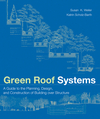Celestial Dispatch
Roofing and the Origins of the Universe
The venerable BBC offers a peek at history sitting atop the peak of homes

The interplanetary dust cloud, or zodiacal cloud, consists of cosmic dust that pervades the space between planets within planetary systems, such as the Solar System. (Source: Wikipedia)
— Images courtesy of Wikipedia
It came from outer space.
When it comes to "dust," whether on the ground or one’s roof, an intrepid reporter for "Auntie Beeb,” known on this side of the pond as the British Broadcasting Corp., looked at the sprinkling covering much of the earth, including all those rooftops, and discovered much of it is intermixed with “cosmic dust.”
The microscopic particles from outer space are referred to by scientists as “micrometeorites,” mainly the debris from comets and asteroids that have settled across our planet.
Scientists are learning dust is more than just a reminder that it may be time for a spruce-up; it also contains clues to how Earth and our Solar System were formed. And while the stuff is literally everywhere, finding it amongst the dirt and debris is far from straightforward.
Most cosmic dust, scientists say, probably comes from the Zodiacal cloud, an interplanetary dust cloud that orbits our Sun. The BBC explained that when the Earth passes through this cloud, the cosmic dust is swept up by our planet's atmosphere.

Above: An assortment of melted micrometeorites; light microscope images of stony cosmic spherules; the largest spherule is about 300µm in diameter. Photo by Shaw Street (Creative Commons license).
Once the particles settle to the ground, they can be found anywhere — from your waistcoat to your drip edge — yet despite its widespread presence, finding cosmic dust isn't necessarily easy.One place the BBC identified as a location where particles show up more easily is Antarctica. Around a decade ago, Matthew Genge at Imperial College London spent seven weeks searching for and collecting dust as part of the Antarctic Search for Meteorites program, or ‘Ansmet.’
The U.S.-led field-based science project recovered meteorite specimens, and since then, Genge has spent years analyzing the materials he found on that trip.
"Sometimes I feel like it's a bit like the emperor's clothes; I've spent my life studying something no one can see," Genge told the Beeb, noting that Antarctica is the perfect place to go if you're looking for cosmic material. "It's the driest place on Earth because all the water there is ice. And that means the cosmic dust and meteorites last long."
However, one need not travel to the bottom of the planet when the roof (slightly more accessible for most of us) is just above our heads.
"You can imagine, if a meteorite falls in the UK, try finding it in the grass. It's literally looking for the cosmic needle in the haystack," says Genge.
Penny Wozniakiewicz of the University of Kent in England, about 20 miles northwest of Dover —home to those infamous white cliffs — has focused her research closer to home and said the key is to collect material from a relatively undisturbed spot.
The scientist said she scours the rooftops of old cathedrals throughout Britain and, so far this month, has collected dust and debris from cathedrals in Canterbury and Rochester in the south of England. She focused on those roofs because of their age and state of being “untouched” versus modern buildings.
Each year, the BBC noted approximately 100 billion particles of space dust land on Earth, carrying secrets from asteroids and offering glimpses into the formation of planetary systems. These micrometeorites contain water and organic molecules, potentially serving as the building blocks for life on Earth.
So, the next time you decide to power wash a roof, perhaps take a moment to appreciate the history of the debris interspersed among the shingles and shake.
Looking for a reprint of this article?
From high-res PDFs to custom plaques, order your copy today!






.jpg?height=200&t=1742489805&width=200)


